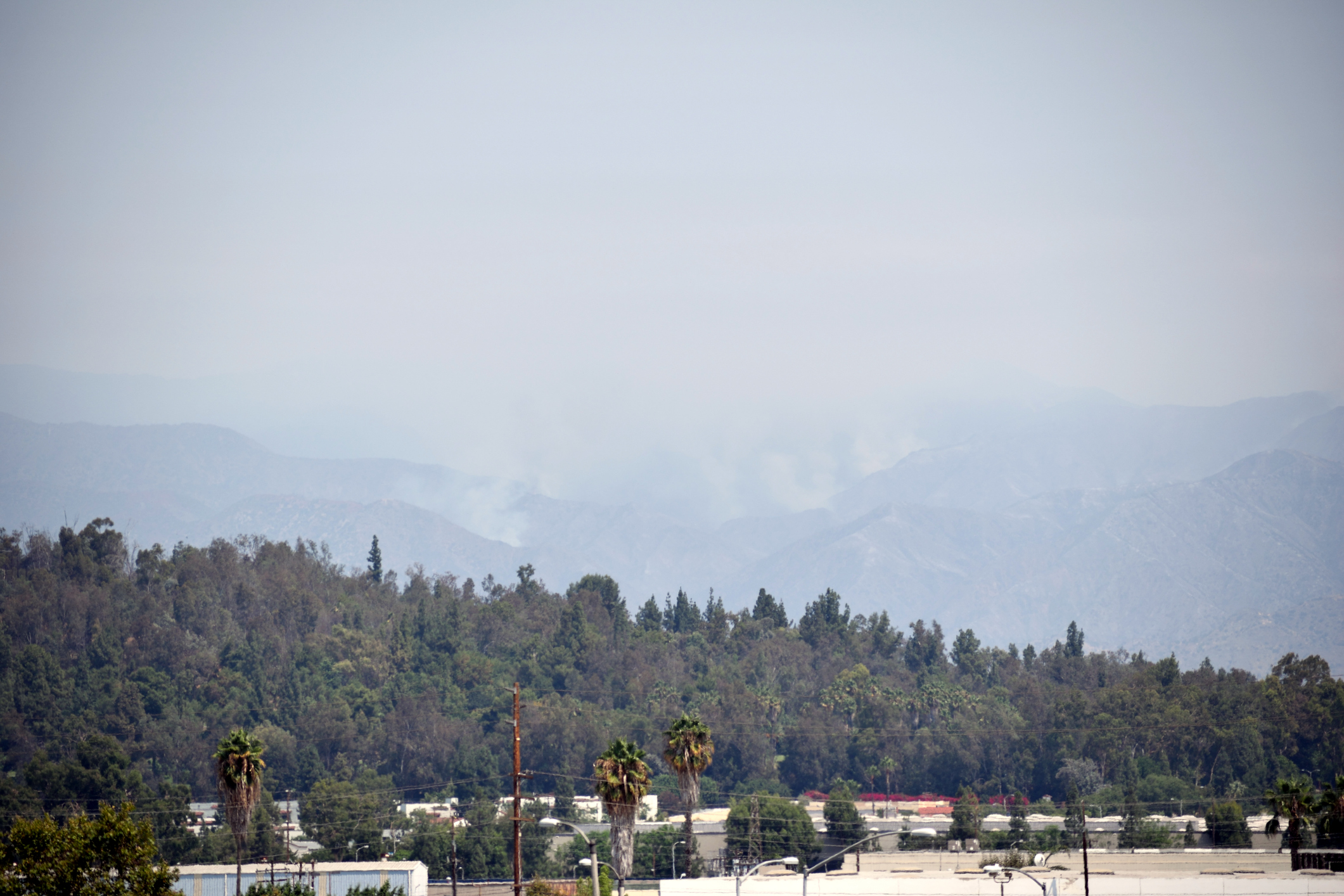
5 Facts to Strengthen Resilience for California’s Small Businesses
Introduction
California is the world’s fifth-largest economy, with a nominal GDP of $3.9 trillion in 2023.1 California small businesses are a vital part of the state’s economy. The Golden State is home to approximately 4.1 million small businesses, making up around 99% of all California businesses, the nation’s largest share of small businesses per state.2,3 These small businesses employ almost half of the state’s private sector workforce.4 While small businesses are a vital part of California’s economy, many face unique challenges in an ever-changing economy and must now confront the impacts of climate change. Understanding the current state of small businesses’ emergency preparedness in California offers a foundation for addressing the barriers and unique challenges they face in navigating climate change. These insights are crucial for policymakers aiming to develop targeted interventions that ensure small businesses can keep their doors open and continue contributing to the state’s economy.
Across the nation, small businesses encounter significant obstacles in preparing for and responding to climate change as they often face more financial constraints than larger firms.5 Every year, California faces natural disasters, primarily wildfires, floods, and droughts;6 as a direct consequence, small businesses suffer economic losses.7 In the past five years, California has experienced nine separate ‘billion-dollar climate disaster events’ that have cost8 the state between $20-50 billion. 9 With the increasing frequency and severity of climate change-induced natural disasters like extreme weather events,10 small businesses across the state face substantial risks if not prepared adequately.
In 2022, the Federal Reserve’s Small Business Credit Survey found that about 1 in 5 California small businesses reported experiencing losses from natural disasters in the prior year.11 Considering that small businesses make up the majority of California’s business, natural disasters pose an increasing risk to the local communities that rely on these businesses for revenue, employment, community contributions, and the state’s overall economy. Despite these risks, few businesses have measures in place, such as hazard insurance, to reduce their risk in the face of natural disasters.
In this data factsheet, we use data from our 2022 survey of small businesses to examine the relationship between emergency preparedness, perception of climate change risk, formal sustainability planning, and business location type. Emergency preparedness refers to the steps small businesses take to ensure their business is safe before, during, and after an emergency or natural disaster. The survey measured three dimensions of emergency preparedness by asking businesses if they had natural disaster insurance (flood, earthquake, or fire insurance), purchased a generator, and implemented measures against flood and wind damage
Data
This factsheet is based on a telephone survey conducted by UCLA LPPI and the UCLA Center for Neighborhood Knowledge between September 2022 and September 2023, involving over 600 small business owners and managers in California. While the survey used a convenience sample and does not fully represent all state businesses, it offers valuable insights. The survey featured 52 questions on topics such as access to capital, technology, cybersecurity, recovery from COVID-19, environmental sustainability practices, climate change impacts, and energy costs.
The factsheet focuses on five key questions: Do you have flood, earthquake, or fire insurance? Have you taken steps to flood- or windproof your facility? Do you have a backup generator? How do you prioritize climate change risks? Does your business have a formal sustainability plan? Findings are reported only for statistically significant results (p < 0.05), with sample sizes varying across key findings as not all respondents answered every question.
Key Findings
1. Home-based businesses were less likely to have natural disaster coverage than those with a storefront.
Insurance boosts resilience for small businesses by offering financial protection during severe economic hardship caused by natural disasters. It also helps them recover faster by providing financial support after a disaster. Despite these protections, our findings show that almost a quarter (28%) of all surveyed small businesses reported not having insurance.
The percentage of businesses without insurance almost doubles when comparing coverage rates between storefront and home-based businesses. About 44% of home-based businesses did not have insurance compared to 23% of businesses with a storefront. While limited research exists on home-based businesses in California, our findings highlight a gap in natural disaster insurance for home-based small businesses, suggesting that business location type may impact the ability of small businesses to recover quickly from a flood, earthquake, or fire.
Figure 1: Flood, earthquake, or fire insurance coverage by business location type
Note: Valid sample size = 563; excluded respondents that answered “not sure or don’t know”.
Source: UCLA LPPI analysis of original survey data collected by WestGroup Research between September 2022 through November 2022.
2. The majority of small businesses surveyed in California reported not having a backup generator for power outages.
The electrical grid powers more than 145 million American households and businesses.12 From 2000 to 2023, more than 80% of all major U.S. power outages reported were caused by weather-related events, including severe storms, hurricanes, wildfires, and winter weather.13 The Department of Energy estimates that power outages cost American businesses around $150 billion annually.14 Between 2000 and 2023, California ranked third in reported weather-related power outages, following Texas and Michigan.15 As extreme weather events become more unpredictable and intense due to climate change, the risk of power outages is expected to rise.16 As a result, small businesses will need to be prepared to generate power from alternative sources during outages.
Our findings show that only 31% of surveyed small businesses had purchased a backup generator, with home-based businesses more likely to have one (71%) than storefront businesses (41%). Notably, the majority (69%) of small businesses, regardless of location, did not own generators, suggesting that many California businesses may be unprepared for power outages during emergencies.
Figure 2: Obtained a generator for business by business location type
Note: Valid sample size = 597; excluded respondents that answered “not sure or don’t know”.
Source: UCLA LPPI analysis of original survey data collected by WestGroup Research between September 2022 to November 2022.
3. Businesses that prioritize climate change risks were more likely to implement flood and wind protection measures.
Uncertainties about climate change and misinformation17 can make it difficult for small businesses to fully understand its impact, delaying emergency preparedness. A survey by the SME Climate Hub found that lack of skills, knowledge, funding, and time are key barriers preventing small and medium-sized businesses from taking climate action, including disaster preparedness.18 Oftentimes, these businesses prioritize immediate operational needs over sustainability, seeing it as a cost rather than an investment.
Our findings show that only 19% of small businesses surveyed had taken steps to flood-proof or wind-proof their facility, and the vast majority did not consider climate change a high risk (83%). Consistent with previous research by the Federal Reserve Bank of San Francisco,19 our findings also show that businesses that perceive climate change as a high risk are more likely to adopt flood and wind protection measures. For example, 27% of those who viewed climate change as a high priority had taken such steps, compared to 15% of those who viewed it as a low priority. Additionally, over 50% of businesses with high climate risk perception reported that climate change had a noticeable impact on their finances, compared to 29% with lower risk perception. This suggests that financial challenges caused by climate change may influence awareness and emergency preparedness levels.
Figure 3. Taken action to flood-proof or wind-proof facility by climate change risk
Note: Valid sample size = 597; excluded respondents that answered “not sure or don’t know”.
Source: UCLA LPPI analysis of original survey data collected by WestGroup Research between September 2022 to November 2022.
4. Small businesses with an environmental sustainability plan or working on a plan were more likely to have taken storm protection measures.
Integrating sustainability efforts with emergency preparedness is increasingly recognized as essential for small businesses,20 especially as climate change amplifies the severity of natural disasters.21 Studies indicate that businesses with formal sustainability or resilience plans tend to be better prepared for natural disasters.22 As climate change increases the frequency and severity of such events, sustainability planning can help small businesses build resilience.
Our findings show that 15% of all surveyed small businesses had developed a formal sustainability plan, and 19% had taken steps to flood or windproof their businesses. Our data also shows that businesses with formal sustainability plans or in the process of developing them were more likely to implement wind and flood protection measures. For instance, small businesses with a formal sustainability plan were 1.5 times more likely to have implemented wind or flood protection measures than those with no intentions of developing one (24% versus 16%, respectively). The results highlight the potential of sustainability planning to enhance the resilience and stability of small businesses during extreme weather events and natural disasters.
Figure 4. Taken action to flood-proof or wind-proof facility by formal environmental sustainability planning
Note: Valid sample size = 549; excluded respondents that answered “not sure or don’t know”.
Source: UCLA LPPI analysis of original survey data collected by WestGroup Research between September 2022 to November 2022.
5. Small businesses that adopted sustainability measures were more likely to invest in emergency preparedness, such as purchasing generators.
Among the small businesses surveyed, those that had implemented sustainability-related measures were more likely to have purchased a generator compared to those that had not. Sustainability measures include increased use of energy-efficient technology and equipment, installation of solar panels, purchasing or replacing vehicles toward a zero-emission fleet, reducing waste and water consumption, increasing recycling, and developing sustainable products and services, among other measures. Surveyed businesses with sustainability practices in place were more likely to have a generator (40%) than those without (26%). The most common sustainability actions included reducing waste and increasing recycling (90%), followed by using energy-efficient technology (76%), cutting water consumption (65%), and developing sustainable products and services (58%). These findings suggest that businesses focusing on sustainability are not only investing in preventive measures to protect themselves from disasters such as power outages but also adopting broader practices to enhance their overall resilience and environmental responsibility.
Figure 5. Obtained a generator for business by sustainability measure adoption
Note: Valid sample size = 575; excluded respondents that answered “not sure or don’t know”.
Source: UCLA LPPI analysis of original survey data collected by WestGroup Research between September 2022 to November 2022.
Conclusion
This data factsheet underscores the vulnerability of California’s small businesses to natural disasters and highlights the critical gaps in their preparedness. Our findings show that while some businesses have invested in emergency-related measures, such as insurance and electrical backups, a large portion remains unprepared, especially home-based businesses. Our findings also show that businesses that prioritize climate change risks and sustainability planning are more likely to take protective actions. The brief underscores the need for greater awareness and action to bolster climate change knowledge and sustainability planning to ensure that small businesses are not only resilient but also contribute to community stability during adverse weather events.
End Notes
1 Governor of California, “California Remains the World’s 5th Largest Economy,” accessed September 19, 2024, available oline.
2 U.S. Small Business Administration Office of Advocacy, “2023 Small Business Profiles, California,” accessed July 14, 2024, available online.
3 California Office of the Small Business Advocate, “How Small Businesses Drive California’s Economy,” accessed September 19, 2024, available online.
4 U.S. Small Business Administration Office of Advocacy, “2023 Small Business Profiles, California,” accessed July 14, 2024, available online.
5 Lawhorn Julie M. and Lindsay Bruce R., Federal Disaster Assistance for Businesses: Summaries and Policy Options (Congressional Research Service), available online.
6 California State Board of Equalization, “Disaster List,” accessed August 13, 2024, available online.
7 Funderburk Brianna, and Misera Lucas, “The Impact of Natural Disasters on Small Businesses” (Fed Small Business, November 2022), available online.
8 NOAA determines the costs of billion-dollar climate disaster events using public and private sector sources. Costs include: physical damage to residential, commercial, and municipal buildings; material assets (content) within buildings; time element losses such as business interruption or loss of living quarters; damage to vehicles and boats; public assets including roads, bridges, levees; electrical infrastructure and offshore energy platforms; agricultural assets including crops, livestock, and commercial timber; and wildfire suppression costs, among others.
9 NOAA National Centers for Environmental Information, “U.S. Billion-Dollar Weather and Climate Disasters, California,” accessed August 24, 2024, available online.
10 Shuquan Chen, Bagrodia Rohini, Pfeffer Charlotte C., Meli Laura, and Bonanno George A., “Anxiety and Resilience in the Face of Natural Disasters Associated with Climate Change: A Review and Methodological Critique.” Journal of Anxiety Disorders 76, (2020), available online.
11 Fed Small Business, “2023 Firms in Focus: Findings from the 2022 Small Business Credit Survey, Chartbook on California Employer Firms,” Accessed September 01, 2024, available online.
12 U.S. Energy Information Administration, “U.S. Electric System Is Made up of Interconnections and Balancing Authorities,” updated July 20, 2016, available online.
13 Climate Central, “Weather-related Power Outages Rising,” Updated April 23, 2024, available online.
14 U.S. Energy Information Administration, “U.S. Electric System Is Made up of Interconnections and Balancing Authorities,” updated July 20, 2016, available online.
15 Climate Central, “Weather-related Power Outages Rising,” Updated April 23, 2024, available online.
16 Andresen, Adam X., Liza C. Kurtz, David M. Hondula, Sara Meerow, and Melanie Gall, “Understanding the Social Impacts of Power Outages in North America: A Systematic Review,” Environmental Research Letters 18, no.5 (2023), available here.
17 Fleming, Melissa, “Rampant Climate Disinformation Online Is Distorting Dangers, Delaying Climate Action,” We The Peoples (blog), May 16, 2022, available online.
18 Small and Medium-sized Enterprises (SME) Climate Hub, “New Data Reveals Two-Thirds of Surveyed Small Businesses Concerned over Navigating Climate Action,” (press release, February 23, 2022), available online.
19 Jargalsaikhan Hishgee, Leduc Sylvain, and Oliveira Luiz E., “Business Survey on Climate-Related Risk,” San Francisco Federal Reserve, March 21, 2022, available online.
20 U.S. Small Business Administration, “SBA Urges Small Businesses to Strengthen Resilience During National Disaster Preparedness Month,” (press release, September 20, 2024), available online.
21 Shuquan Chen, Bagrodia Rohini, Pfeffer Charlotte C., Meli Laura, and Bonanno George A., “Anxiety and Resilience in the Face of Natural Disasters Associated with Climate Change: A Review and Methodological Critique.” Journal of Anxiety Disorders 76, (2020), available online.
22 Restore Your Economy “Engaging The Business Community In Disaster Preparedness, ” accessed September 23, 2024, available online.
Acknowledgments
This factsheet series is part of UCLA LPPI’s The Economic Recovery & Entrepreneurship Project (TEREP), a joint project with the UCLA Center for Neighborhood Knowledge. TEREP provides timely data and resources for key stakeholders who support Latine entrepreneurship in the United States. The initiative focuses on equipping Latine business-serving organizations, policymakers, and business owners with the community-informed research they need to meet the challenges of a 21st-century economy. Visit our website, latinoterep.org, to see our reports, data for action, and toolkits. This factsheet series was made possible with the generous support of JP Morgan Chase Global Philanthropy and the James Irvine Foundation. The California Latino Legislative Caucus provides core operating support for the UCLA Latino Policy and Politics Institute. The authors are also grateful for Professor Paul M. Ong, Misael Galdámez, Chhandara Pech, and Rosario Majano’s data insights.











